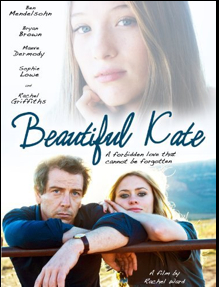 It’s time to get out the crystal ball again. I thought I’d take a slightly different approach this year by tackling ten fairly broad themes and identifying appropriate specifics under each. I tried to cover all of the main issues though the field is so large now as to ensure any roundup like this won’t be complete.
It’s time to get out the crystal ball again. I thought I’d take a slightly different approach this year by tackling ten fairly broad themes and identifying appropriate specifics under each. I tried to cover all of the main issues though the field is so large now as to ensure any roundup like this won’t be complete.
Hopefully there’ll be a better success rate than last year. As always, would love to hear your thoughts on what you see occurring during 2011. If you’ve got your own set of predictions, either post them in the comments or provide a URL and I’ll link it at the bottom of the post.
The predictions:
1. Second Life
It’s fair to say that Linden Lab had a mixed year during 2010 with Second Life. 2011 is likely to be even more turbulent. I’m not going to fence sit on this one too much: the next 12 months will see Linden Lab finally sold to a big tech player based in the US. Whether it’s bought out or not, expect some more significant user-interface improvements but an overall decline in number of hours in-world per user. That decline will be driven primarily by diffusion as dedicated content creators, educators and long-term residents increasingly spread out to OpenSim grids, Blue Mars etc . Second Life might see an increase in concurrency, coming from the more casual / social users attracted by an easier to use interface. That seems to be Linden Lab’s strategy anyway. Oh – and legally compliant gambling will be provided in-world by Linden Lab.
2. OpenSim
The safe prediction here is ongoing growth, but beyond that it’s a pretty murky picture. Consolidation is one of the clearer trends: a handful of grid providers will probably hold some dominance, with a skew of smaller / solo grids running. Hypergrid protocols are ever-improving, but for wider-adoption the larger providers will play a key role assuming they can keep delivering good service with a growing userbase. So overall: continued growth and emergence / consolidation of larger grid provders.
3. Blue Mars
Over the past year Blue Mars has been continuing to evolve and has picked up a cohort of Second Life content creators. Assuming the funding keeps coming in, that growth is likely to continue although it’s doubtful that 2011 will see Blue Mars reach full launch and if it does, expect a slow but promising level of uptake by new users. Unless Second Life has a major stumble, Blue Mars won’t be in its league as far as content or user numbers during 2011 – 2012 may be a different story though depending on how things pan out with both camps.
4. The casual phenomenon
The casual worlds like on platforms like Facebook will continue to fragment. Numbers will continue to grow but at a much slower rate. Fatigue with the limitations will also grow as people debate the merit of these worlds versus more traditional casual games (think Bejeweled etc). Not surprisingly there will also be a lot of underperforming worlds that close – exacerbating the fatigue with the genre from more experienced users.
5. Media and societal acceptance
The coming year will see increasing focus on how we interact in virtual environments. The Microsoft Kinect is already receiving a lot of attention, and the media are likely to latch onto the theme of improving physical activity whilst highlighting the odd case of severe addiction/injury. Nothing new there really – the difference over time however is the growing acceptance that these developments need to be incorporated into society’s thinking on a range of issues. Key educators and policy-makers have known this for years but that widespread acceptance (if not understanding) is certainly taking a big step during 2011.
6. Government
The momentum with virtual worlds at the US Government level is significant, driven primarily by intertwined military and health-care needs. Beyong that 2011 seems a pretty arid zone on the government side. Although there are potential cost-savings in the longer-term, most European governments aren’t in a financial state to invest heavily in ‘cutting edge’ work. In the Asia-Pacific I’m always surprised at the lack of overt work in the area and don’t expect 2011 to be any different. On the home front, the national political scene is favourable only from the viewpoint of the National Broadband Network rolling out. Government 2.0 initiatives are at a fairly early stage and virtual environments aren’t playing any active role in that anyway at this stage.
7. Browser-based evolution
Like it or not, people want the ease of a browser-based virtual world without losing too much of the complexity. This year will see that trend continue with some good new options emerging. Using Second Life as an example, development is well underway both at Linden Lab and externally. What you definitely won’t see this year however is a browser-based experience as good as the standalone offering. That’s well over 12 months away but it is coming.
8. Gaming Worlds
2011 is actually a huge year for MMOs. The key event will be the launch of Star Wars: The Old Republic (SWTOR). We’ve been following it pretty closely and so far it’s looking like it’ll be successful. There’ll be a lot of talk about SWTOR being a World of Warcraft killer. That’s a lot of hyperbole (for 2011 at least) but expect it to pick up a very significant user base in a short time. To be more specific, by end of 2011 I’d expect subscriber numbers to be sitting between two and three million minimum.
World of Warcraft itself will see fairly steady or slightly declining numbers maintained by the recent Cataclysm expansion, with continued dominance of the market for the coming year.
9. Business
Absolute status quo: there will be no increased level of traction with business beyond some further acceptance of virtual meeting solutions. The ROI equation for business till isn’t clear enough, making adoption of virtual worlds technologies an exception to the rule. Good research (see Point 10 below) will be crucial for this to change.
10. Research and Development
The number of virtual worlds research projects will continue to increase, with a particular focus on areas such as simulation and the neuropsychological aspects of virtual reality. The simulation research will be pivotal in building solid cases for business, non-government and government adoption of the technology. In an environment where more and more human services professionals are needed in an ageing population, simulation makes huge sense and will be a key driver in the medium term.
___
So what say you? Let the debate begin.







Recent Comments